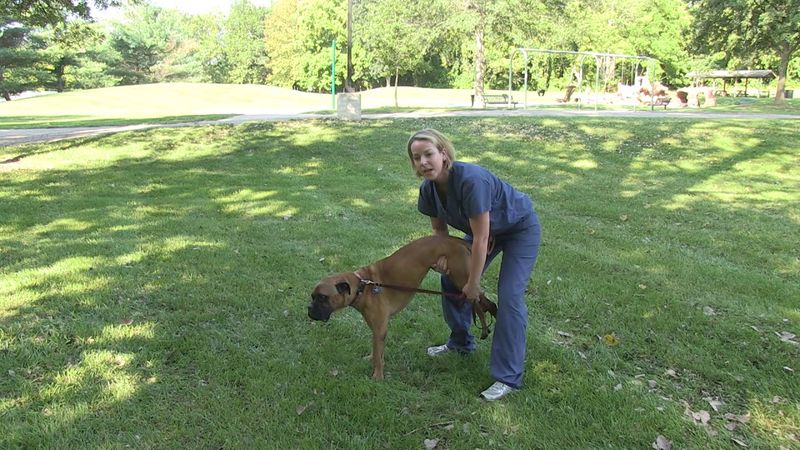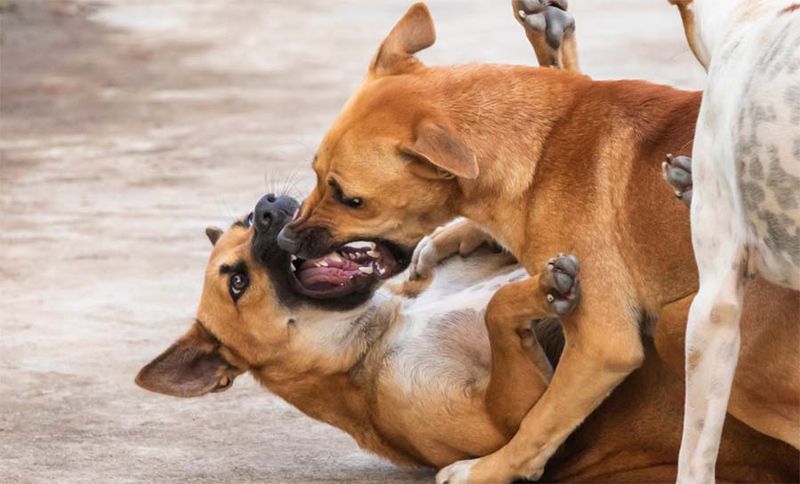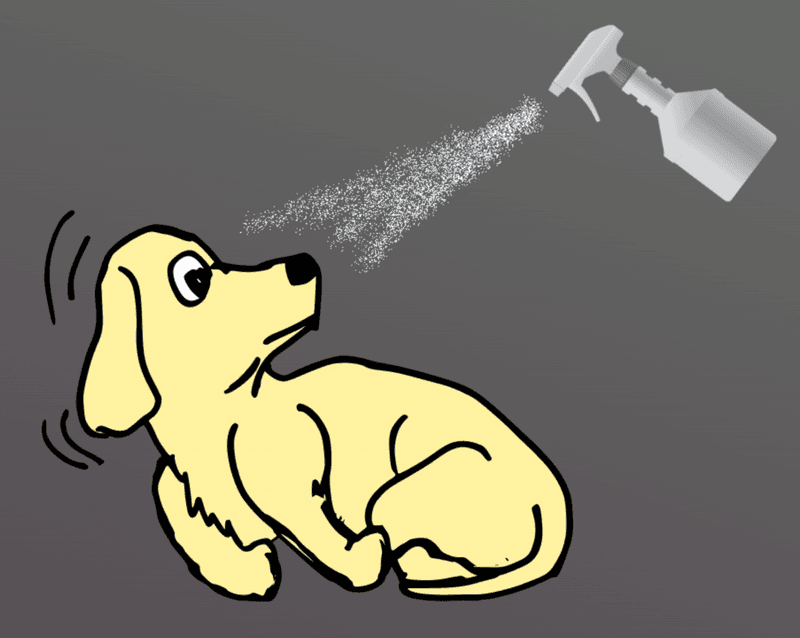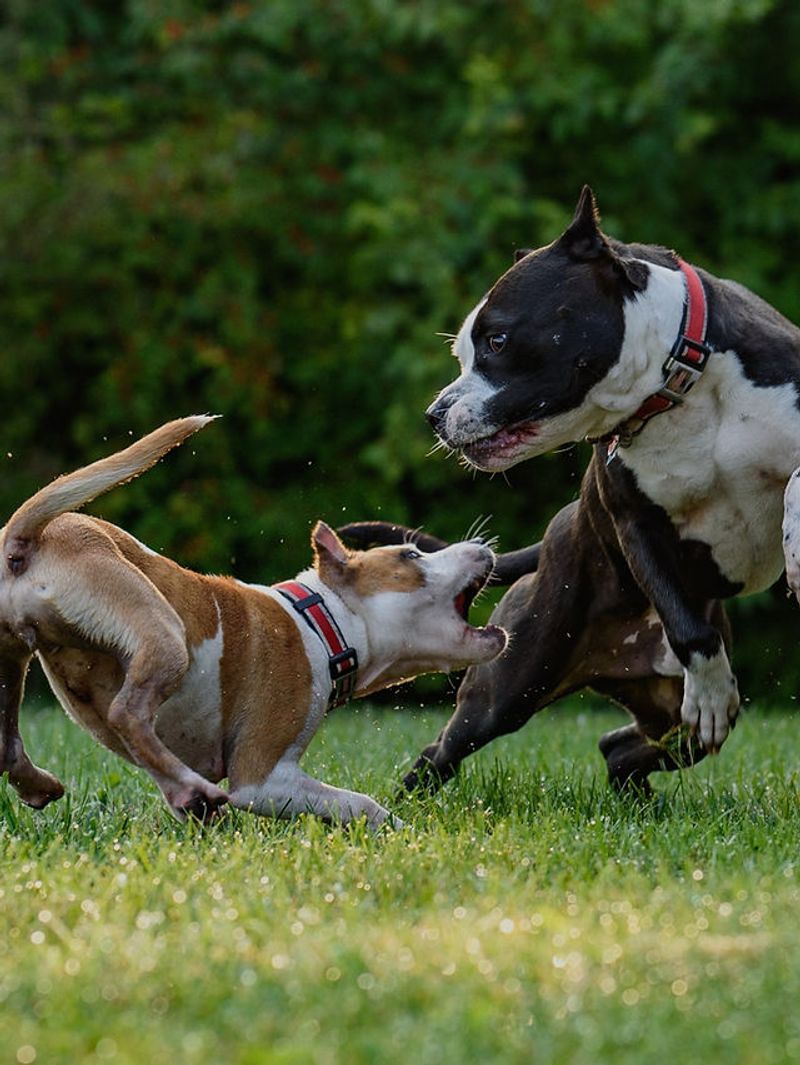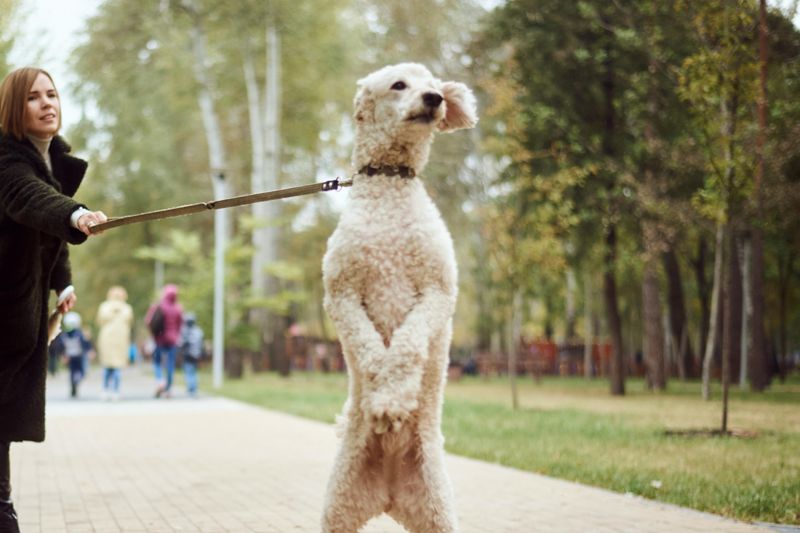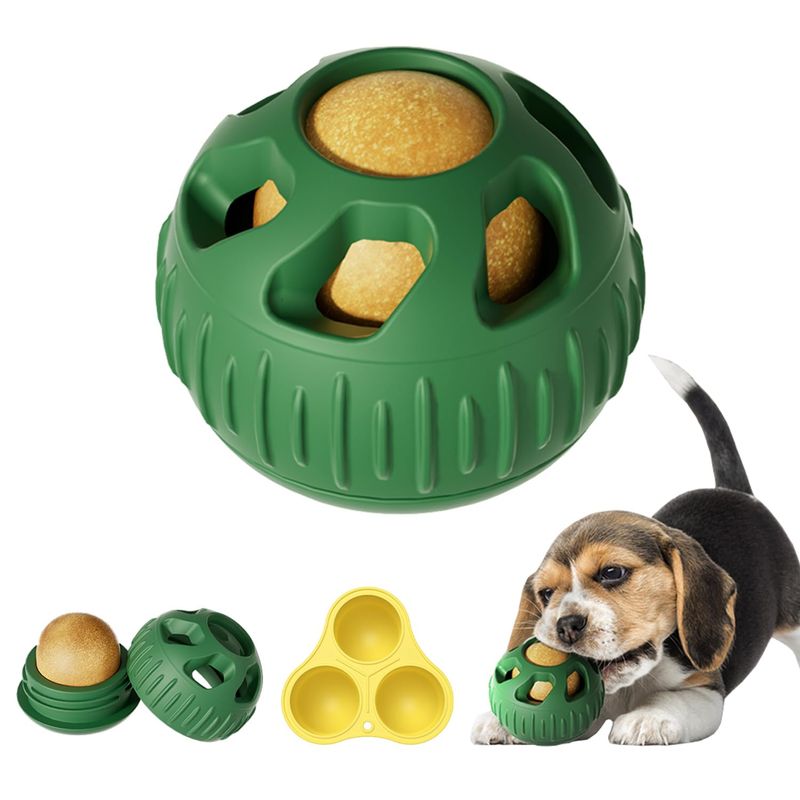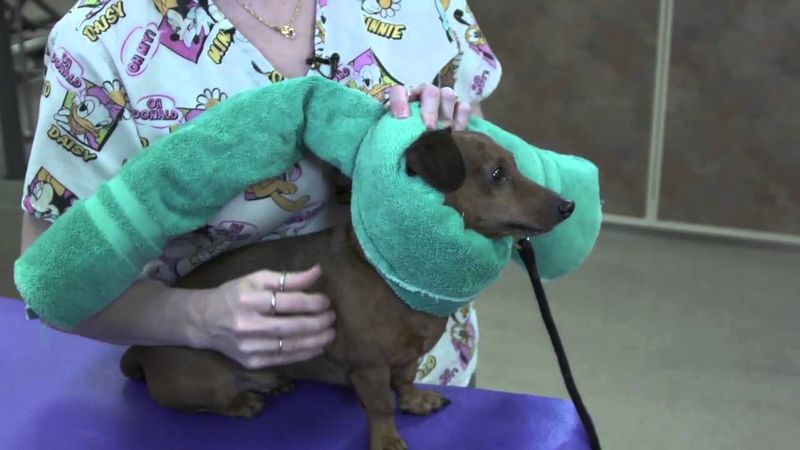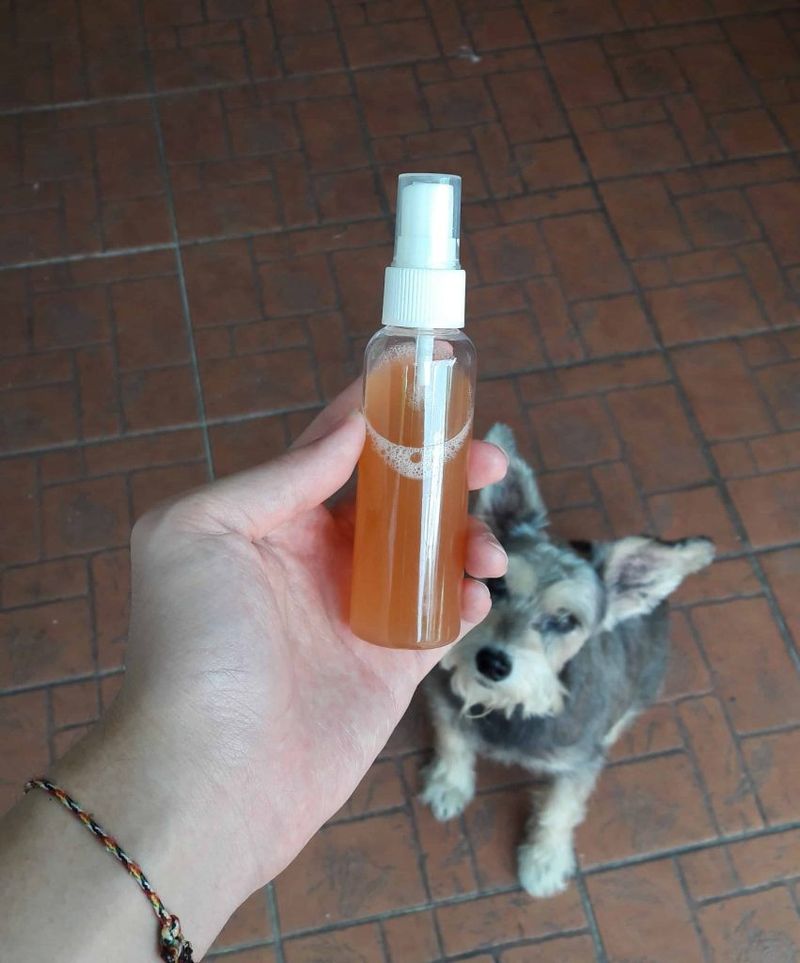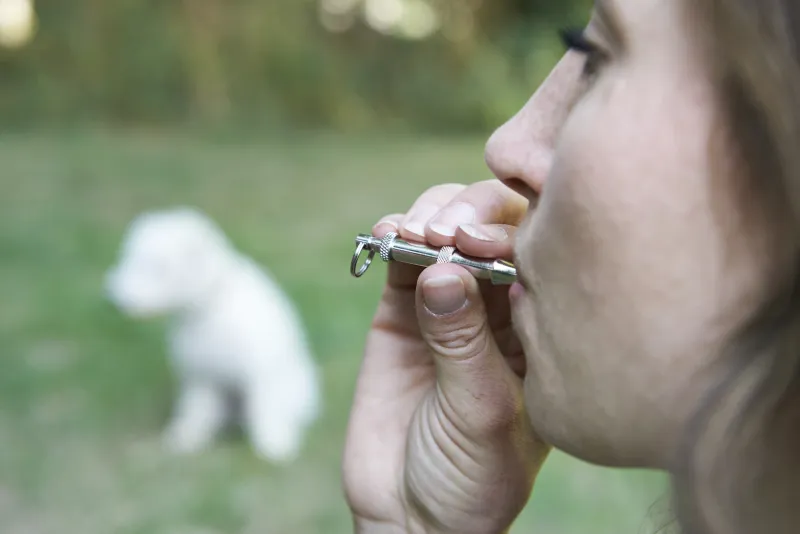Dog fights can be sudden and dangerous, requiring quick and decisive action to prevent injury. Knowing how to safely and effectively break up a dog fight is crucial for any dog owner or handler. This guide provides 12 of the fastest and most effective methods, ensuring the safety of both the dogs and the humans involved.
The Wheelbarrow Method
Grabbing a dog’s hind legs and lifting them off the ground can effectively stop a fight. By doing so, you remove their ability to push forward. This method, known as the Wheelbarrow Method, requires caution. Approach the dogs slowly from behind, ensuring not to startle them. Once you have a firm grip, keep moving backward. The dog will be forced to follow, breaking its focus on the fight. It’s essential to communicate with another person to handle the second dog simultaneously, ensuring safety. This approach is quick and often successful in separating fighting dogs.
Use of a Blanket
Throwing a blanket over fighting dogs can disorient them. This method takes advantage of the sudden change in their environment. With vision obscured, many dogs become confused and stop fighting. It’s crucial to use a thick blanket to avoid bites. Approach carefully and throw the blanket swiftly over the dogs. Once they’ve paused, separate them promptly. This technique is particularly useful for handlers who may be alone. Its effectiveness lies in the quick and unexpected nature of the intervention, providing a safe way to intervene in a brawl.
Loud Noise Distraction
Creating a loud noise can act as a distraction. Whether clapping hands, banging pots, or using an air horn, the sudden sound can startle dogs into stopping. This method is non-invasive, making it a safe choice for those wary of physical intervention. The key is to be ready to separate the dogs immediately after they pause. Loud noises disrupt their focus, providing a critical moment to intervene. Use this method in combination with other strategies for the best results, ensuring a swift and safe resolution to the conflict.
Water Spray Technique
Spraying fighting dogs with water can effectively break their concentration. The Water Spray Technique involves using a garden hose or a spray bottle to apply water to the dogs. The unexpected sensation often causes them to stop fighting momentarily. This method is beneficial in outdoor settings where water is readily available. It’s a non-threatening way to interrupt a fight without direct physical contact. Once the dogs have paused, it’s crucial to separate them immediately to prevent the fight from reigniting. This method is simple and surprisingly effective.
Use of a Barrier
Inserting a barrier between fighting dogs can effectively stop the altercation. A large piece of wood, plastic, or even a garbage can lid can serve as a divider. The key is to insert the barrier swiftly but safely, avoiding injury to yourself or the dogs. This method keeps you at a safe distance and provides a physical block. Once the barrier is in place, work on separating the dogs. It’s particularly useful in confined spaces where other methods might be less effective. Quick thinking and available materials can save the day with this tactic.
Leash Control
Using leashes to control dogs is a direct method to stop fights. It requires two handlers, each grabbing and pulling a dog’s leash away from the other. This method provides immediate physical control, reducing the chance of injury. It’s essential to remain calm and assertive, guiding the dogs apart carefully. Leash control is effective but requires coordination and timing. Once separated, ensure the dogs are secured to prevent a re-engagement. This technique is best used with trained dogs familiar with leash commands, making it a reliable option when available.
Vocal Commands
Firm vocal commands can sometimes halt a dog fight. If the dogs recognize and respond to your voice, this method can be highly effective. Use a deep, authoritative tone, commanding the dogs to stop or sit. It’s essential to remain composed, as your energy can influence the dogs. This technique relies on prior training; dogs accustomed to obeying commands are more likely to respond. Once attention is gained, separate the dogs quickly to prevent further escalation. Vocal commands offer a direct, non-physical means of intervention, suitable for trained pets.
Use of a Slip Lead
A slip lead can provide control in a dog fight. Placing it over a dog’s head and tightening it can help regain control swiftly. This method requires practice and should be done carefully to avoid harm. Approach the dogs calmly, slipping the lead over one dog’s head. Once tightened, guide the dog away from the altercation. It’s a method often used by professional handlers familiar with the tool. Slip leads are effective for quick control and can be a lifesaver in intense situations, offering a safe distance from the fighting dogs.
Distracting Toys
Toys can serve as powerful distractions during dog fights. Squeaky toys, in particular, grab attention due to their sound. Throwing a toy away from the fight can redirect the dogs’ focus. This method works best with dogs that are toy-motivated. The key is to act fast, using the toy to break the dogs’ concentration. Once distracted, guide the dogs apart and secure them. Distracting toys offer a fun, non-threatening way to intervene, adding an element of play even in tense moments. It’s a creative approach worth trying with playful pets.
Physical Restraint with Towels
Towels can aid in physically restraining dogs during a fight. Rolling a thick towel and placing it between the dogs can interrupt the fight. This method is useful in indoor settings where other tools might not be available. Approach the dogs carefully, using the towel to push them apart. It’s essential to remain calm and avoid getting too close to the dogs’ heads. Towels provide a soft yet firm barrier, reducing the risk of injury. Physical restraint with towels is a resourceful option, especially in emergencies with limited resources.
Use of a Squirt Bottle with Vinegar
Vinegar sprays can effectively deter dogs during a fight. A squirt bottle filled with a vinegar solution can change the course of an altercation. The smell and taste are unpleasant for dogs, prompting them to pause. It’s crucial to aim carefully, avoiding the eyes and focusing on the body. Once the dogs react, quickly separate them. This method is practical for those who prefer non-physical interventions. The vinegar spray provides a simple, accessible solution, utilizing household items to resolve conflicts safely and effectively.
Whistle Distraction
Whistles can interrupt dog fights by creating a sharp, piercing sound. The noise is often enough to catch the dogs’ attention, stopping the fight momentarily. Keep a whistle handy in areas where dogs frequently play or interact. Timing is key; blow the whistle as soon as the fight starts, then separate the dogs. This method is non-invasive and easy to execute. Whistle distraction works well with dogs that are not heavily engaged, providing a split second of distraction to ensure safety. It’s a straightforward, auditory-focused tactic for quick intervention.

